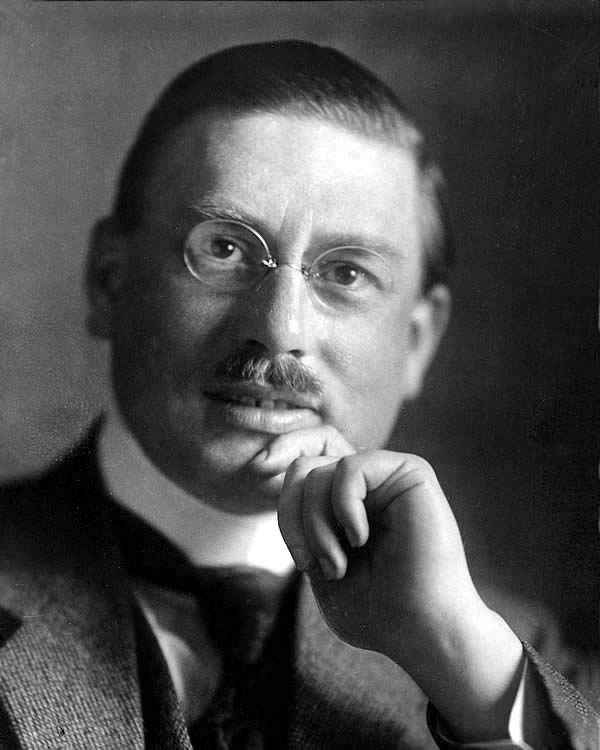Peter Debye (1884–1966)
Professor of physics

Peter Joseph Wilhelm Debye was born in Maastricht (Netherlands) on 24 March 1884. His father, Joannes Wilhelmus Debije, was a foreman in a metalwork factory; his mother Maria Anna Barbara Ruemkens, a cashier and cloakroom attendant at the theatre.
School career
He attended the Bürgerschule (secondary modern) in his home town. As he lacked Latin skills, however, he embarked on a degree at the Institute of Technology in Aachen 30 km away. In 1905 Debye already obtained his diploma as an electrical engineer at the age of 19 and, the same year, became a technical mechanics assistant.
Promoting and habilitation
One year later, he followed Professor Arnold Sommerfeld to Munich, where he completed a PhD as an assistant for theoretical physics two years later. In 1910 he qualified as a private lecturer in theoretical physics.
Work as a teacher and scientist
In 1911 he succeeded Albert Einstein as an associate professor of theoretical physics at the University of Zurich. The following year, he also became a full professor in Utrecht and published his first important paper, "Zur Theorie der spezifischen Wärmen" (Debye's T3 law), in 1912. His professorship of theoretical and experimental physics at the University of Göttingen and activities as Director of the Theoretical Department at the Physics Institute there from 1913 were major milestones. During his time in Göttingen, he met the young Swiss scientist Paul Scherrer, with whom he developed the Powder Method (1915) for the determination of crystalline materials with x-radiation, which would become extremely important for science and technology.
Stay at ETH Zurich
The depressing post-war conditions in Germany prompted him to take up a position as a professor of physics at ETH Zurich in the summer of 1920. The Polytechnic Institute made Debye, who had become quite famous by then, a lifelong professor. Although he only actually taught at ETH Zurich for seven years, his research during this period would have a major impact. As the director of ETH Zurich's Physics Institute, he and his assistant Erich Hückel established the theory of solutions for strong electrolytes in 1922 and penned fundamental papers on electrolytic solutions (Debye-Hückel Theory). Moreover, he managed to set up an actual school for x-ray interference measurement together with Paul Scherrer, whom he had brought from Göttingen, formulate conceptual considerations on the adiabatic demagnetisation of paramagnetic salts (1926) and test his dipole theory experimentally.
Leipzig and Berlin
In the winter of 1927/28 he returned to Germany, where he had been offered a professorship of experimental physics in outstanding research conditions alongside theoretician Werner Heisenberg at the University of Leipzig. When Albert Einstein resigned in 1933, Debye became Director of the Kaiser Wilhelm Institute for Physics in Berlin in 1935, which was to be rebuilt under an agreement between the Third Reich and the Rockefeller Foundation in Berlin-Dahlem (now named the Max Planck Institute for Physics). From 1935 to 1940, he taught at the University of Berlin and held a guest professorship in Liège.
Nobel Prize
Debye eventually received the external page Nobel Prize in Chemistry in 1936 in recognition of his contribution to the study of molecular structure thanks to his research work on dipole moments, x-ray diffraction and the spectroscopy of gases.
Emigration to the USA
Shortly after the outbreak of World War II, as a Dutchman Debye left the Third Reich, which required him to take German citizenship if he wanted to continue as Director of the institute. He emigrated to the USA with his wife and son and taught as a professor of chemistry at Cornell University in Ithaca (NY) while his daughter remained in Germany. Nevertheless, he acted as editor of the "Physikalische Zeitschrift", which was published in the Third Reich with the collaboration of the Physikalisch-Technische Reichsanstalt, until 1945. His attitude towards Nazi Germany triggered a external page controversy between 2006 and 2011.
Obituary and awards
After he retired in 1952, he continued to work at the laboratory in Ithaca and gave talks all over the world. He died on 2 November 1966.
Peter Debye received numerous honorary doctorates in Europe and the USA. He won major scientific awards and was a member of several scientific academies.
Debye is regarded as one of the greatest and most gifted scientists of the last century. He was also dubbed "Leonardo of the 20th century" because of his interdisciplinary and ground-breaking research. The biggest testament to his polyvalence is the fact that he – a physicist – won the Nobel Prize in Chemistry.
Manuscript
![Ein Ausschnitt aus einer Arbeit von Peter Debye über die Röntgenstreuung in Körpern [...]](/en/locations-and-media/platforms/short-portraits/debye-peter-1884-1966/_jcr_content/par/fullwidthimage/image.imageformat.1286.1250948571.jpg)
Holdings
The ETH Zurich University Archives contain manuscripts of Debye’s research activity, lecture transcripts, letters and a biographical dossier. Moreover, the external page Max Planck Society and the external page University of Göttingen Arhcives own further documents.
All Nobel Prize laureates of ETH Zurich at a glance